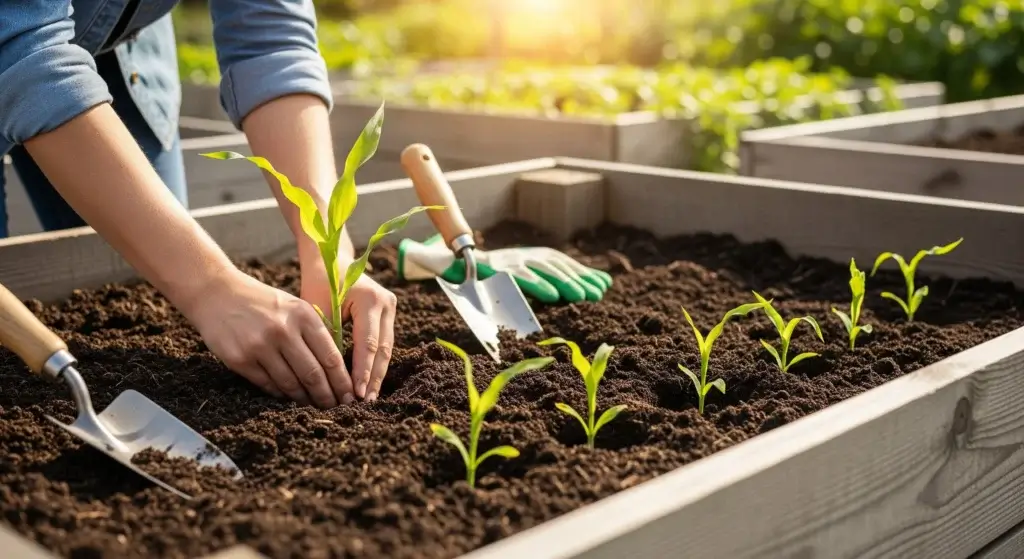
Growing healthy, productive pepper plants requires a consistent care routine.
Without proper maintenance, peppers can struggle with slow growth, pest infestations, or nutrient deficiencies.
By creating a structured weekly schedule, you can ensure your pepper plants thrive throughout the growing season.
This guide will help you set up a simple yet effective maintenance plan that covers watering, feeding, pest control, and seasonal adjustments.
Understanding Your Pepper Plants’ Needs
To grow strong, healthy pepper plants that produce plenty of fruit, it’s important to understand their basic needs.
Here’s what you need to know:
Watering
Pepper plants need consistent moisture, but too much water can harm them.
Here’s how to water them right:
- Use the finger test: Stick your finger about 2 inches into the soil. If it feels dry, it’s time to water.
- Water deeply and evenly to ensure the soil is moist but not waterlogged.
- Water in the morning or evening to reduce evaporation and give plants time to absorb moisture.
Sunlight requirements
Peppers love the sun and need plenty of it to thrive:
- Aim for 6–8 hours of direct sunlight each day.
- If you’re growing peppers in containers, rotate them regularly to ensure all sides of the plant get even sun exposure.
Soil and fertilization
Healthy soil is key to growing strong pepper plants:
- Use well-draining, nutrient-rich soil with a pH between 6.0 and 6.8.
- Apply a balanced fertilizer, like 10-10-10 or 5-10-10, to support healthy growth and fruit production.
- For an organic approach, use compost or fish emulsion to provide slow-release nutrients over time.
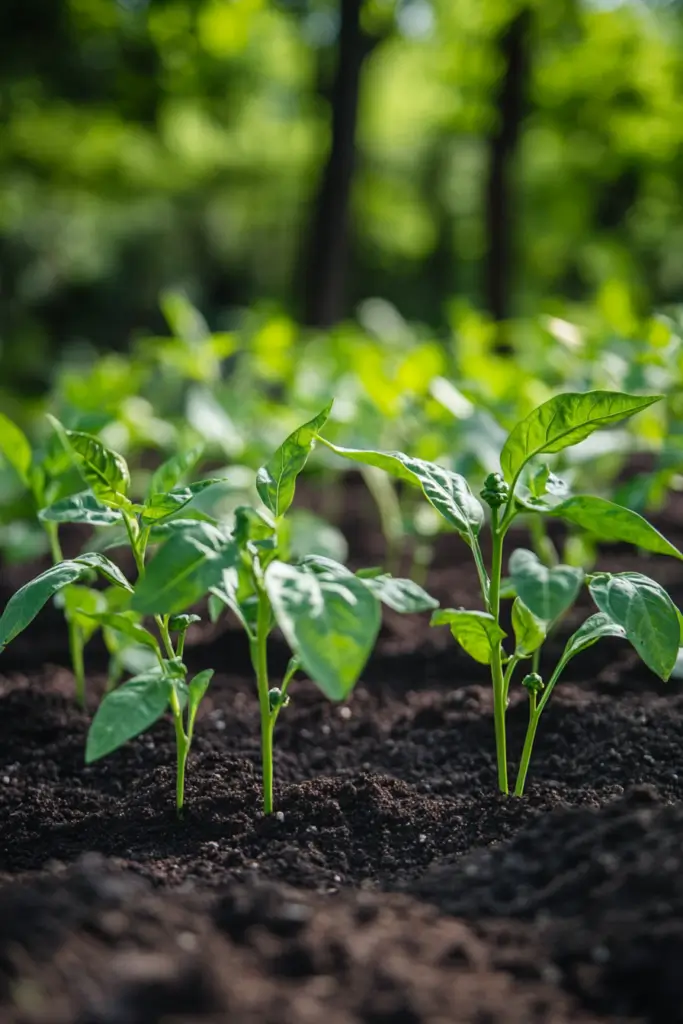
- Read also: Weather Woes: Is the Weather Sabotaging Your Pepper Plants?
- Read also: The Essential Guide to Humidity Levels for Healthy Pepper Plants
Creating Your Weekly Pepper Plant Schedule
Now that you know the basics of caring for your pepper plants, here’s a simple weekly schedule to keep them healthy and productive.
Follow these steps to ensure your plants thrive:
Monday: water day
- Check the soil moisture using the finger test. Stick your finger about 2 inches into the soil—if it feels dry, it’s time to water.
- Water deeply at the base of the plant, avoiding the leaves to prevent disease.
- Aim for about 1–1.5 inches of water per week, adjusting based on weather conditions.
Wednesday: check-up day
- Inspect your plants for pests like aphids, spider mites, or caterpillars.
- Look for signs of trouble, such as yellowing leaves, curling, or disease.
- Remove dead or damaged leaves to improve airflow and reduce the risk of disease.
- If pests are present, use organic solutions like neem oil or insecticidal soap to treat the problem.
Friday: feeding (every other week)
- Apply a balanced fertilizer, such as a 10-10-10 mix, or use organic compost tea.
- If using granular fertilizer, sprinkle it at the base of the plant and water it in.
- For compost users, spread a thin layer of compost around the base of the plants to provide slow-release nutrients.
Saturday: sun and support
- Make sure your plants are getting 6–8 hours of sunlight daily.
- If you’re growing peppers in containers, rotate them to ensure even sun exposure.
- For tall or heavily fruiting plants, add stakes or cages to provide support and prevent branches from breaking.
Sunday: Rest and observe
- Take a moment to walk through your garden and observe your plants’ health.
- Enjoy the progress your peppers are making!
- Make notes if you notice anything that needs adjusting, like watering, feeding, or pest control.
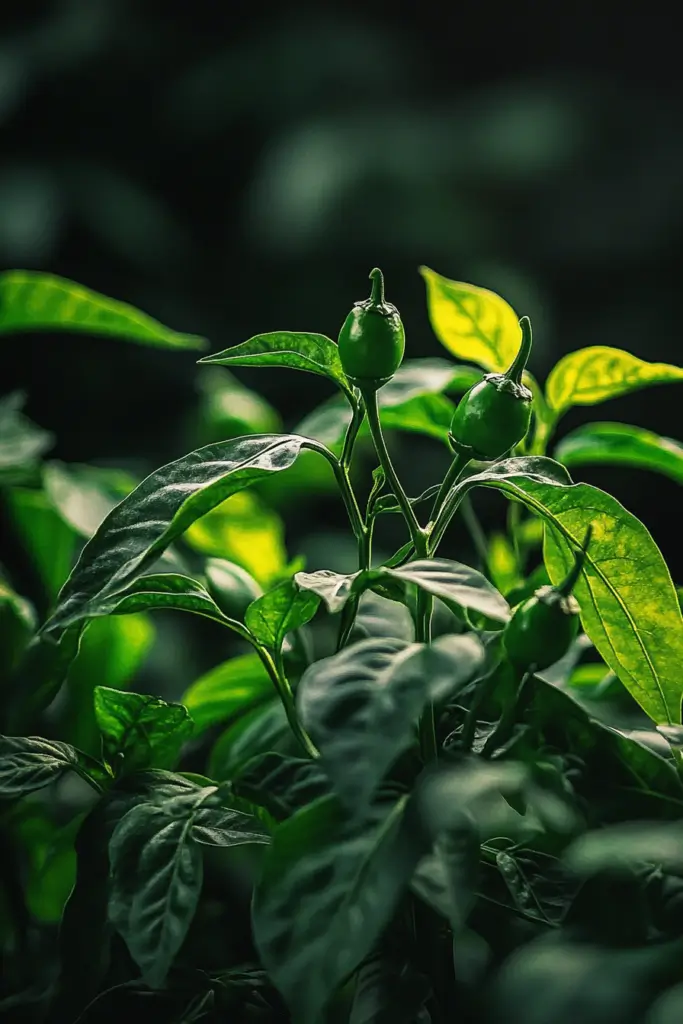
Seasonal Adjustments
Pepper plants have different needs depending on the season.
To keep them healthy year-round, adjust your care routine as the weather changes.
Here’s how:
Spring/summer
- Increase watering: Hot weather means your plants will need more water. Check the soil frequently and water deeply to keep the roots hydrated.
- Consistent fertilization: Support active growth and fruit production by fertilizing regularly. Use a balanced fertilizer or compost to provide essential nutrients.
Fall
- Reduce watering: As temperatures cool, your plants will need less water. Adjust your watering schedule to avoid overwatering.
- Prepare for cooler nights: Use row covers or cloths to protect your plants from chilly nights, especially as fall progresses.
Winter (if applicable)
- Bring container plants indoors: If you’re growing peppers in containers, move them indoors before the first frost to keep them safe.
- Protect outdoor plants: In mild climates, use mulch or row covers to shield outdoor plants from cold snaps and frost.
Troubleshooting Common Problems
Even with a solid care routine, pepper plants can sometimes run into issues.
Here’s how to identify and fix common problems quickly:
Pests
- Signs to look for: Check for small bugs, holes in leaves, or sticky residue on plants.
- Solution: Use organic treatments like neem oil or insecticidal soap. You can also introduce beneficial insects, such as ladybugs, to naturally control pests.
Overwatering/underwatering
- Signs to look for: Wilting, yellow leaves, or root rot can indicate watering issues.
- Solution: Check the soil moisture before watering. If the soil is too wet, improve drainage by adding sand or compost. If it’s too dry, water deeply and adjust your schedule.
Lack of sunlight
- Signs to look for: Leggy, stretched-out plants or slow growth often mean not enough sunlight.
- Solution: Move your plants to a sunnier spot where they can get 6–8 hours of direct sunlight daily. If natural light is limited, consider using grow lights to supplement.
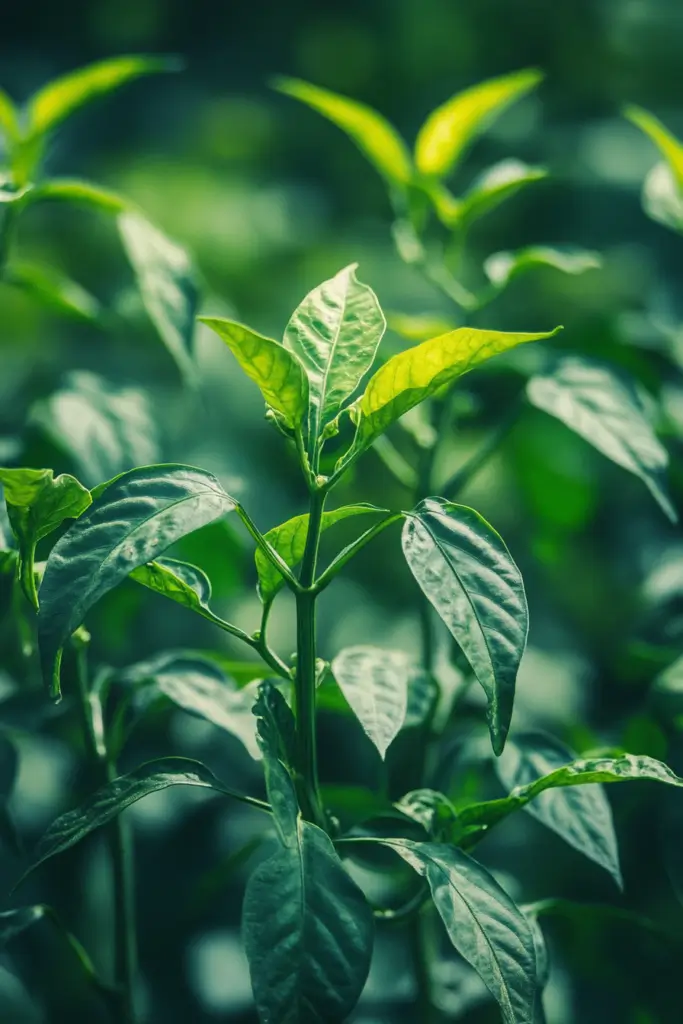
Tips for Success
Growing healthy pepper plants is a rewarding journey.
Here are some practical tips to help you stay on track and make the most of your gardening experience:
Use a calendar or gardening app
Keep track of watering, feeding, and other tasks using a calendar or a gardening app.
This helps you stay organized and ensures your plants get consistent care.
Adjust based on weather and plant needs
Be flexible with your schedule.
Hot, dry weather may mean more watering, while cooler temperatures might require less.
Pay attention to your plants’ signals and adjust as needed.
Observe regularly
Spend time in your garden regularly to check on your plants.
Look for signs like wilting, yellowing leaves, or pests.
Early detection makes it easier to address issues before they become big problems.
Enjoy the process and learn
Gardening is a learning experience.
Celebrate your successes, learn from challenges, and enjoy the journey.
Each growing season teaches you something new, making you a better gardener over time.
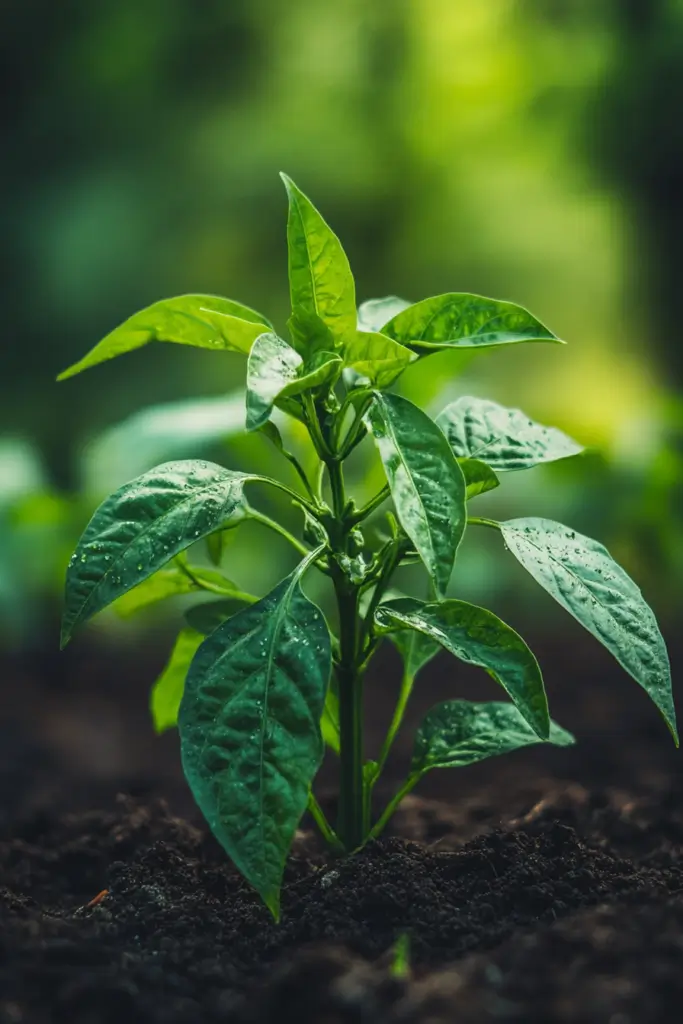
- Read also: Understanding Phosphorus Deficiency in Pepper Plants
- Read also: A Comprehensive Guide: How to Handle Common Pepper Diseases
Final Thoughts
A structured maintenance schedule can make caring for your pepper plants easy and rewarding.
By watering constantly, monitoring plant health, feeding properly, and adjusting for seasonal changes, you’ll set your plants up for success.
Over time, you’ll become more intuitive with their needs and enjoy a bountiful harvest.
FAQs
Water when the soil feels dry about 2 inches down. Generally, 1-1.5 inches of water per week is enough, but this varies based on climate.
A balanced fertilizer (10-10-10 or 5-10-10) works well. Organic options like compost or fish emulsion are also great choices.
This could be due to overwatering, nutrient deficiency, or pests. Check soil moisture and inspect for signs of disease or insects.

